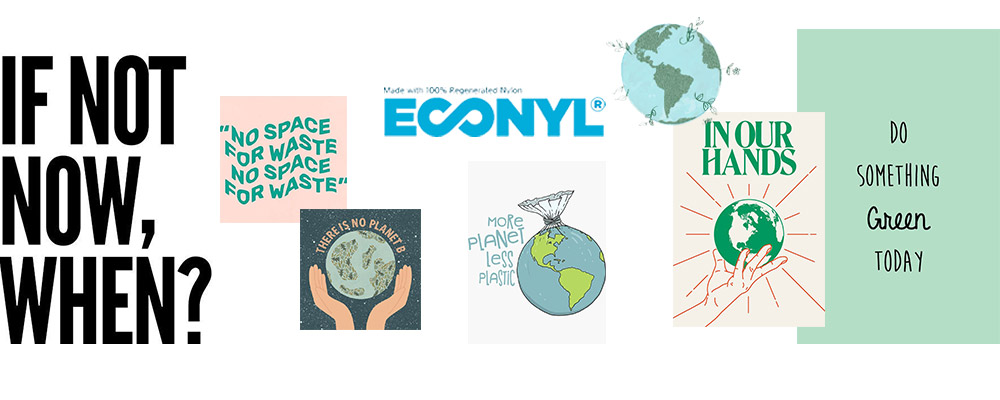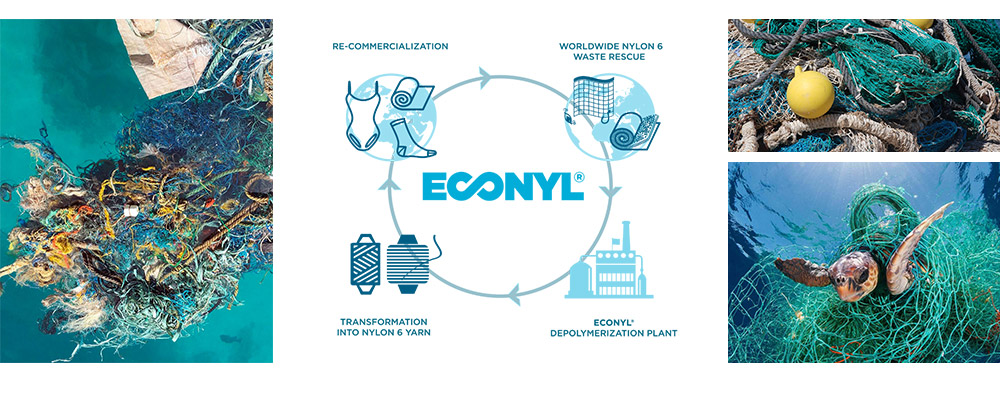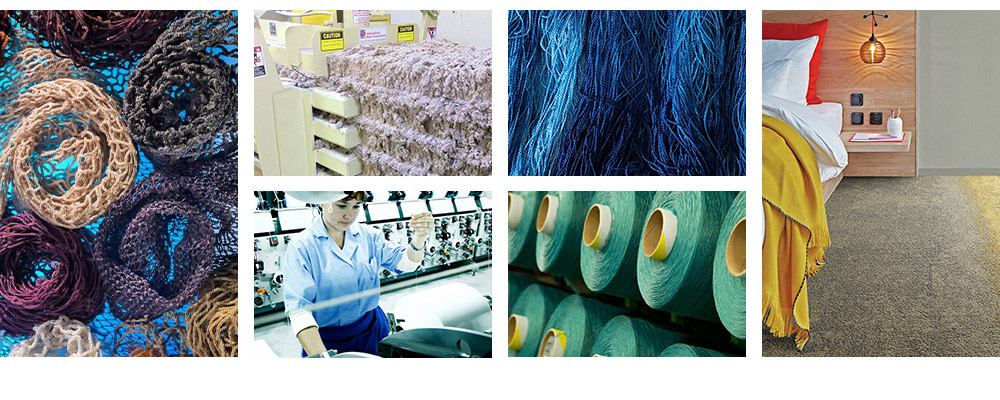No waste or new resources, just endless possibilities
So you may have seen the phrase ‘ECONYL®' or 'ECONYL® Regenerated Nylon' knocking about on DCTUK here, there and everywhere. If you have well, it’s a good thing. It is basically how you could be doing your bit for our precious planet without even having to lift a finger.
As designers and consumers our demand for new products is infinite however, the planet’s resources aren’t. This is where ECONYL® joins the party by giving us the best of both worlds: new products and a better environment.

Some see trash, others see treasure
The ECONYL® regeneration system was established by the brain-boxes over at Aquafil group. We buy, we use and we discard and the waste we generate each year piles up higher and higher in landfills, incinerators and even worse, in nature. Aquafil set out on a mission to put a stop to unnecessary waste of polyamide material polluting our oceans and overflowing landfills. Basically, Aquafil have found a magical way to fish out some of the plastic polluting our oceans and make good use of it. Still with me? Good.
Aquafil dig-out Nylon waste from landfills and oceans all across the world and feed it back into the production cycle by transforming it into ECONYL® Regenerated Nylon. It is exactly the same as brand spanking new Nylon, you’re not losing out on quality or what-not here, but this Nylon can be recycled, recreated and remoulded again and again and again and … you’re getting the gist of this. The goal is that once all products containing ECONYL® are no longer useful to customers, they can go back into step one of the regeneration system. ECONYL® Nylon has the potential to be recycled infinitely without ever losing its quality. Pretty cool right?
Not just a one trick pony. As well as being a solution on waste, ECONYL® can help make the world a better place (*Alexa play 'Michael Jackson - Heal The World'*) as it has way more benefits when it comes to climate change. ECONYL® reduces the global warming impact of Nylon by up to 80% and for every 10,000 tons of ECONYL® raw material, 70,000 barrels of crude oil is saved and 57,100 tonnes of CO2 eq. Emissions is avoided.

Let's take a look at the four-step process (we’ll keep it simple, promise)
Rescue - it all starts with the search and rescue party. They are on the hunt for fishing nets, fabric scraps, carpet flooring and industrial plastic - a landfill is basically a goldmine to those at Aquafil. Any waste that is collected is then sorted through and cleaned to recover all of the nylon possible and is then shipped off to begin its journey back to its origins.
Regenerate - Through a radical regeneration and purification process, the nylon waste is recycled right back to its original purity - it's as good as new baby.
Remake – After being rescued, treated, purified, reduced and all that jazz, the fibres are then distributed to production facilities all over the world where ECONYL® regenerated nylon is processed into carpet and textile yarn for the fashion and interior industries.
Reimagine - Fashion brands and carpet producers (more importantly) then use ECONYL® regenerated Nylon to create brand new ethically-sourced and eco-responsible products.
Check out some ECONYL carpet tiles we offer here at DCTUK

The Net-works™ Project
Way way back in the good ol' days of 2012, Interface and the Zoological Society of London (ZSL) embarked on a magical journey together. Interface wanted to source material in a way that would benefit communities as well as the environment and ZSL wanted to develop a new model of community based conversation - one that would bring immediate benefits to local people and Net-works™ was born.
Net-works™ was designed to tackle the growing environmental problem of discarded fishing nets wreaking havoc with the marine life. Empowering people in some of the world’s poorest coastal communities to collect and sell discarded Nylon fishing nets. The nets are then recovered by Aquafil and regenerated through the ECONYL® regeneration system to make Interface carpet tiles.
Since launching in 2012, 142 metric tons of fishing nets have been collected and recycled through the ECONYL® regeneration system, 1,500 families now have access to finance and 62,000 people are enjoying a healthier environment.
Shop Interface’s Networks & ECONYL products here!
Since launching Net-works™, Interface have continued their waste positive journey and are rethinking carpet. For the last 200 years, humans have had an unhealthy addiction to using an abundance of fossil fuels as well as buying and consuming lots of resources without thinking about its impact. Interface's mission is climate take back - to reverse the effects of global warming and every manufacturer should be doing the same. Read more about it here.
